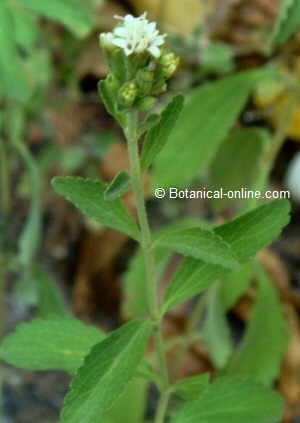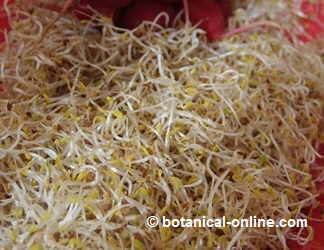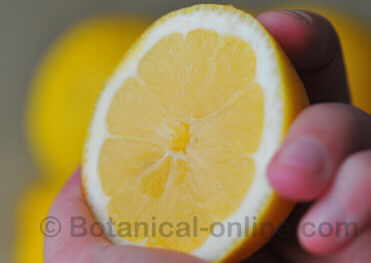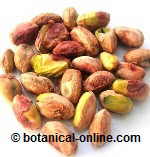Contents
- 1 Medicinal properties of parsley
- 1.1 Properties of parsley (Petroselinum crispum)
- 1.2 Parsley for the digestive system
- 1.3 Diuretic properties of parsley
- 1.4 How to take parsley for diuretic purposes?
- 1.5 Parsley for weight loss
- 1.6 Parsley for the appetite
- 1.7 Other medicinal uses of parsley
- 1.8 Curative properties of parsley in external use
- 1.9 Benefits of eating parsley
- 1.10 Parsley toxicity. Is Parsley Safe?
Medicinal properties of parsley
Properties of parsley (Petroselinum crispum)
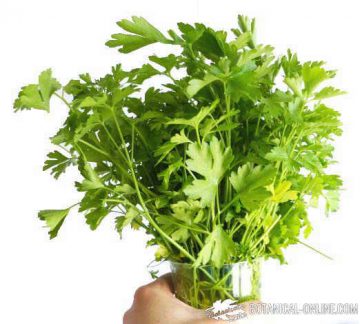
Parsley (Petroselinum crispum) is a plant widely known for its properties as an aromatic herb. Its use as such goes back to almost immemorial times. However, the medicinal properties of this plant are not so popular.
In internal use, parsley is mainly mainly in the form of infusions, decoctions or juices, since it has carminative, antispasmodic, diuretic, emmenagogue, expectorant, antirheumatic and antimicrobial properties. The tender plant can also be used as food-medicine. Used in this way, parsley herb preparations present the following healing properties.
INTERNAL USE PREPARATIONS
Parsley for the digestive system
Parsley is a carminative plant, stomach and digestive tonic. It is traditionally used in cases of flatulence, swollen belly, colic and poor digestion.
Adding parsley to meals favors digestion, helps to expel flatulence, and whets the appetite. Parsley is very suitable for intestinal spasms or cramps. (Infusion of a small tablespoon of seeds, per cup of water. 2 cups a day) (In case of anorexia or lack of appetite, take a cup of the infusion half an hour before meals)
Diuretic properties of parsley
Parsley is one of the best diuretic remedies, due to the action of apiol, which favors the elimination of body fluids. It has traditionally been used to treat cystitis, dysuria, and kidney conditions.
It is also useful to prevent the formation of kidney stones, since it allows the expulsion of the gravel through the urine before it settles and compacts in the form of a stone. However, parsley is not suitable in those cases where the stones are due to oxalates.
Due to its diuretic properties, the use of this plant is suitable in cases of obesity, rheumatic diseases and heart diseases associated with the accumulation of water in the body. (Take 3 tablespoons of juice a day, obtained by crushing the plant or buying in a specialized store)
How to take parsley for diuretic purposes?
There are the following recipes:
- Decoction of a teaspoon of dried root. Let it stand for ¼ hour and take a couple of cups a day
- Juice: Squeeze the tender plant and take a couple of tablespoons a day. The juice is also sold in pharmacies and herbalists.
It will also be useful to detoxify the body and free it from those products that cause abnormalities such as hives.
Parsley for weight loss
Because of its diuretic and purifying properties, parsley is a very suitable plant for people with obesity or who need to lose weight.
Parsley for the appetite
Parsley is a very suitable condiment to introduce in all the dishes of people with anorexia or lack of appetite, since it is a vegetable very rich in folic acid and vitamin C, important vitamins for the correct assimilation of iron.
In addition, parsley is a plant with a moderate iron content, so it reinforces the dose of this mineral in the diet for anemia. (Eat a diet rich in iron, and add a sprig of chopped raw parsley at meals or at the end of cooking).
Other medicinal uses of parsley
- Depurative: The depurative capacity of parsley is suitable to eliminate toxins, which may be used as a remedy for jaundice that produces yellowing of the skin and the whites of the eyes. (Infusion of 1 tablespoon of dried seeds with two tablespoons of dried leaves per liter of water. Drink a couple of cups a day)
- Emmenagogue: Promotes menstruation and relieves pain associated with it. The influence of myristicin and apiol are responsible for this property. In doses higher than permitted, both are toxic. (Decoction: 25 gr. root for half a liter of water for 10 minutes. Take one cup a day.)
- Enhancer: Parsley increases estrogen production, so it is specially useful in menopause (Immerse a couple of glasses of parsley in a liter of boiling water for 45 minutes. Turn off the heat and let it rest for an hour. Take a glass before intercourse).
- Halitosis: Bad breath or halitosis can be fought by chewing some parsley leaves.
- Remove a bad taste in the mouth: Parsley is a valid remedy to counteract the bad breath produced by the ingestion of certain foods such as garlic, onions, sausages, fermented cheeses, fish, etc. (Chew some parsley leaves after meals)…
Curative properties of parsley in external use
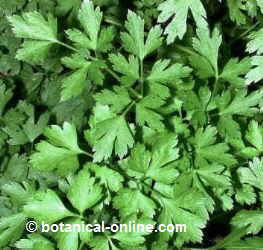
Used externally, in the form of poultices, juices or compresses, the parsley plant presents the following properties:
- Eye drops: This plant relieves irritations of tired eyes (Squeeze the tender plant and apply some juice to the eyes with a gauze)
- Anesthetic: It attenuates the pain (Apply a poultice with the juice diluted in alcohol, on the area where the pain occurs) Ascorbic acid and zinc are responsible for this property. Very useful in earaches, toothaches and tendon pains, such as tendinitis or bursaritis (Make a small ball with parsley and olive oil, add a little bit of salt and put the mixture in the ear, or on the teeth. Apply this same mixture as a cladding on the painful joint)
- Stains on the skin: It presents bleaching properties and is ideal for lightening skin blemishes of any kind. (Crush a branch of parsley and apply the juice with gauze on the freckles, spots produced by the sun)
- Bumps or bruises: It protects the capillary wall making it more shock-resistant and not so easily to broken. If we combine this property together with its analgesic values, we will see how it is useful for the treatment of bruises in the eyes, as well as in any type of bruise or the blue or black marks that usually appear on the legs of women. It is also interesting to improve the symptoms of the blows suffered by athletes. (Mixing with parsley and olive oil. Apply this same mixture in the form of a plaster on the painful area)
- Nosebleeds: Parsley juice is ideal for preventing nosebleeds.
- Mushrooms: Parsley juice contains fungicidal properties. Suitable in the treatment of nail fungi of the nails of the hands or feet.
- Insect bites: fleas, mosquitos, tiger mosquito, ticks, etc. Crush the plant and rub its juice on the bite.
- Galactofuge: Stop excess milk production in nursing mothers (Squeeze the tender plant and apply a little juice on the breasts with a gauze) Relaxing: (Pour an infusion of a couple of liters of water with 50 gr. of fruits in bath water). It will produce a remarkable relaxing effect.
Benefits of eating parsley
Parsley is a widely used condiment to add a touch of flavor and make recipes more attractive. It is usually consumed fresh, which is how it has the best aroma and color. Consuming parsley regularly is an excellent way to obtain its properties…
Parsley toxicity. Is Parsley Safe?
Under normal conditions, the consumption of parsley does not present toxicity, although overconsumption is contraindicated in pregnancy and lactation, and may cause allergic reactions in certain people sensitive to its components…
![]() More information on parsley
More information on parsley

